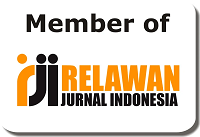Pengujian Long-Short Term Memory (LSTM) Pada Prediksi Trafik Lalu Lintas Menggunakan Multi Server
DOI:
https://doi.org/10.31963/elekterika.v20i1.4242Keywords:
LSTM, Multi Edge Server and Cloud Server, Traffic Light, Travel TimeAbstract
This study presents a test of the long short term memory (LSTM) algorithm on traffic prediction with multi edge server and cloud server architectures. IoT sensors located on the roadside such as cameras and location data on each driver are used and stored in the data center. When a driver sends a travel time request to a nearby edge server, traffic predictions will be made on the edge server or cloud server. Server selection is made based on the destination location of the driver's request. If the destination is in the edge server area, traffic predictions are made on the edge server. However, if the destination is in the cloud server area, traffic predictions are made on the cloud server. Then to predict traffic traffic is done with LSTM. following modeling is made with a density of 128 and a density of 256. By learning from previous traffic, LSTM with a greater density gets a proportion of errors, namely RMSE 10.78%, MAE 8.24%, and MAPE 19.87%.ÂReferences
A. Rejeb, K. Rejeb, S. Simske, H. Treiblmaier, and S. Zailani, “The big picture on the internet of things and the smart city: a review of what we know and what we need to know,†Internet of Things, vol. 19, p. 100565, Aug. 2022, doi: 10.1016/j.iot.2022.100565.
A. S. Syed, D. Sierra-Sosa, A. Kumar, and A. Elmaghraby, “IoT in Smart Cities: A Survey of Technologies, Practices and Challenges,†Smart Cities, vol. 4, no. 2, pp. 429–475, Mar. 2021, doi: 10.3390/smartcities4020024.
L. A. Paramesti and D. Atunggal, “ANALISIS TINGKAT KESESUAIAN DARI KLASIFIKASI
A. Rejeb, K. Rejeb, S. Simske, H. Treiblmaier, and S. Zailani, “The big picture on the internet of things and the smart city: a review of what we know and what we need to know,†Internet of Things, vol. 19, p. 100565, Aug. 2022, doi: 10.1016/j.iot.2022.100565.
A. S. Syed, D. Sierra-Sosa, A. Kumar, and A. Elmaghraby, “IoT in Smart Cities: A Survey of Technologies, Practices and Challenges,†Smart Cities, vol. 4, no. 2, pp. 429–475, Mar. 2021, doi: 10.3390/smartcities4020024.
L. A. Paramesti and D. Atunggal, “ANALISIS TINGKAT KESESUAIAN DARI KLASIFIKASI KEPADATAN LALU LINTAS DAN WAKTU TEMPUH GOOGLE MAPS,†JGISE: Journal of Geospatial Information Science and Engineering, vol. 2, no. 2, Dec. 2019, doi: 10.22146/jgise.51134.
A. Khumaidi, R. Raafiúdin, and I. P. Solihin, “Pengujian Algoritma Long Short Term Memory untuk Prediksi Kualitas Udara dan Suhu Kota Bandung,†Jurnal Telematika, vol. 15, no. 1, pp. 13–18, 2020.
M. Rizki, S. Basuki, and Y. Azhar, “Implementasi Deep Learning Menggunakan Arsitektur Long Short Term Memory(LSTM) Untuk Prediksi Curah Hujan Kota Malang,†Jurnal Repositor, vol. 2, no. 3, pp. 331–338, Mar. 2020, doi: 10.22219/repositor.v2i3.470.
P. Poonia and V. K. Jain, “Short-Term Traffic Flow Prediction: Using LSTM,†in 2020 International Conference on Emerging Trends in Communication, Control and Computing (ICONC3), IEEE, Feb. 2020, pp. 1–4. doi: 10.1109/ICONC345789.2020.9117329.
I. O. Arissinta, I. D. Sulistiyawati, D. Kurnianto, and I. Kharisudin, “Pemodelan Time Series untuk Peramalan Web Traffic Menggunakan Algoritma Arima, LSTM, dan GRU,†in PRISMA, Prosiding Seminar Nasional Matematika, Semarang: Jurusan Matematika Fakultas Matematika dan Ilmu Pengetahuan Alam, Universitas Negeri Semarang, 2022, pp. 683–700.
J. Chen, S. Chen, Q. Wang, B. Cao, G. Feng, and J. Hu, “iRAF: A Deep Reinforcement Learning Approach for Collaborative Mobile Edge Computing IoT Networks,†IEEE Internet Things J, vol. 6, no. 4, pp. 7011–7024, Aug. 2019, doi: 10.1109/JIOT.2019.2913162.
W. Z. Khan, E. Ahmed, S. Hakak, I. Yaqoob, and A. Ahmed, “Edge computing: A survey,†Future Generation Computer Systems, vol. 97, pp. 219–235, Aug. 2019, doi: 10.1016/j.future.2019.02.050.










